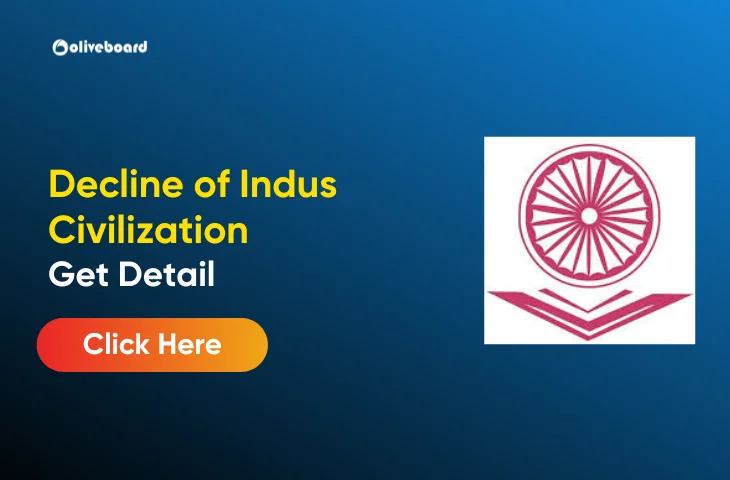Decline of Indus Civilization
The Decline of Indus Civilization is a crucial topic in understanding one of the ancient world’s most advanced societies. This civilization thrived from around 3300 BCE to 1300 BCE in what is now Pakistan and northwest India. Despite its remarkable achievements in urban planning, trade, and culture, the civilization eventually declined. This article explores the key reasons behind its decline, including climate change, invasions, diseases, and natural disasters.
Overview of Indus Civilization
Before discussing its decline, let’s look at some significant aspects of the Indus Civilization:
- Urban Planning: Cities like Harappa and Mohenjo-Daro featured well-organized layouts, including grid patterns, advanced drainage systems, and public baths.
- Economic Activities: The civilization relied on agriculture and trade, exchanging goods with regions like Mesopotamia.
- Cultural Achievements: The people produced high-quality pottery, seals, and metalwork.
Main Theories About the Decline of Indus Civilization
The main theories about the decline of the Indus Civilization include climate change, which caused drought and agricultural failure, and invasions by Indo-Aryans, leading to social instability. Additionally, diseases and natural disasters, such as earthquakes, are believed to have significantly contributed to the civilization’s downfall.
1. Climate Change
One widely accepted theory is that climate change significantly affected the decline of the Indus Civilization.
- Drought: A decrease in rainfall led to long periods of drought, which harmed agriculture and reduced food supplies.
- Deforestation: Large areas of forest were cut down to make room for expanding cities, which contributed to climate change.
- Agricultural Impact: Less water meant crops failed more often, leading to hunger and social unrest.
2. Invasions and Conflicts
Another theory suggests that invasions played a role in the civilization’s decline.
- Indo-Aryan Invasions: Groups migrating from Central Asia, known as Indo-Aryans, might have fought with the Indus people, causing instability.
- Internal Conflicts: With resources becoming scarce, competition among communities could have led to conflicts, weakening the society.
3. Epidemics and Diseases
Some researchers believe that diseases might have contributed to the decline.
- Spread of Disease: Outbreaks of illnesses could have caused significant population losses, which weakened the society.
- Disruption of Activities: High rates of illness could have interrupted trade and agricultural activities, making the situation worse.
4. Natural Disasters
Natural disasters, particularly earthquakes, are another possible cause of the civilization’s decline.
- Earthquakes: There is evidence that the region experienced strong earthquakes, which could have destroyed cities.
- Collapse of Infrastructure: The destruction of buildings and roads would have disrupted trade networks and societal organization.
Theories of the Decline of Indus Civilization – Overview
Theories of the decline of the Indus Civilization provide various explanations for its collapse, including environmental factors, such as climate change and drought, as well as socio-political disruptions, including invasions and internal conflicts.
| Theory | Description | Impact on Civilization |
| Climate Change | Drought and deforestation led to less food production | Famine and social unrest |
| Invasions and Conflicts | Possible conflicts with Indo-Aryans and internal strife | Political instability and population decline |
| Epidemics | Spread of diseases affected the population | Decrease in population and economic activities |
| Natural Disasters | Earthquakes destroyed urban centers | Collapse of trade and infrastructure |
Conclusion
The Decline of Indus Civilization resulted from a mix of climate change, invasions, diseases, and natural disasters. While there are different theories, it is clear that multiple challenges led to the civilization’s downfall. Understanding these factors not only helps us learn about the fate of this advanced society but also serves as a reminder about the vulnerabilities of civilizations facing environmental and social pressures.
Key Takeaways
- The decline involved a combination of climate change, invasions, epidemics, and natural disasters.
- Urban centers faced significant disruptions, leading to a shift from city life to smaller communities.
- The decline highlights the importance of sustainability and resilience in maintaining civilizations.
Decline of Indus Civilization – FAQs
Ans. The decline of the Indus Civilization was attributed to factors like climate change, invasions, and socio-economic challenges.
Ans. The Indus Civilization began to decline around 1900 BCE.
Ans. Yes, natural disasters such as earthquakes and floods are believed to have impacted the stability of the Indus Civilization.
Ans. Some theories suggest that invasions by the Indo-Aryans may have played a role in the decline of the civilization.
- Ancient History of India – UGC NET History Notes

- Emergence of Regional Powers in Early Medieval India- UGC NET History Notes

- Emergence of Heterodox Sects – UGC NET History Notes

- UGC NET History Previous Year Question Paper, PDF Download

- Sangam Literature – UGC NET History Notes

- Mauryan Art and Architecture – UGC NET History Notes


Hello there! I’m a dedicated Government Job aspirant turned passionate writer & content marketer. My blogs are a one-stop destination for accurate and comprehensive information on exams like Regulatory Bodies, Banking, SSC, State PSCs, and more. I’m on a mission to provide you with all the details you need, conveniently in one place. When I’m not writing and marketing, you’ll find me happily experimenting in the kitchen, cooking up delightful treats. Join me on this journey of knowledge and flavors!
